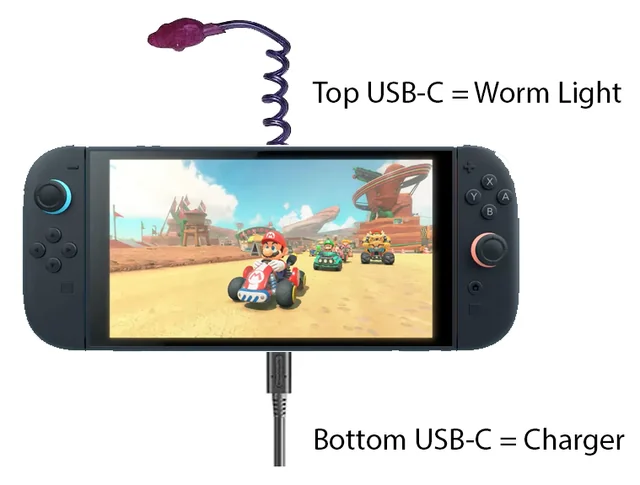
Nintendo’s next-gen hybrid console, the Nintendo Switch 2, will reportedly feature new hardware-level restrictions on its USB-C ports that could limit accessory compatibility—especially when it comes to third-party docks.
According to recent reports from accessory makers and coverage by The Verge, Nintendo has embedded encryption chips and protocols into both of the Switch 2’s USB-C ports. These authentication methods dictate which accessories are allowed to connect, meaning that unauthorized or unlicensed devices may not function properly—or at all.
🧩 Dual USB-C Ports, Different Roles
Unlike its predecessor, the Switch 2 sports two USB-C ports:
-
Top-side USB-C port: Supports charging and accessory connectivity, including official peripherals like the Nintendo Switch 2 Camera and third-party gear from companies like Logitech.
-
Bottom-side USB-C port: Primarily used to connect the console to its Dock, offering features like 4K HDMI output, Ethernet connectivity, and power delivery.
While both ports support charging, it’s the bottom-side port that includes the bulk of the encryption features, which are activated when docked.
🔒 Encrypted Docking and Accessory Authentication
Accessory manufacturers speaking to The Verge revealed that the Switch 2 sends digital handshake instructions to accessories, validating them through encrypted communication. This restricts compatibility and prevents unauthorized docks from fully functioning—a step likely taken to avoid issues seen with the original Switch, where faulty third-party docks caused devices to overheat or brick.
Nintendo’s encryption measures include:
-
A chip embedded in the USB-C interface
-
Encrypted authentication commands sent upon connection
-
The potential for firmware updates that could change authentication behavior or blacklist unapproved accessories
These changes could render even functioning third-party docks obsolete or unstable over time.
⚠️ What Does This Mean for Gamers?
If you’re planning to use third-party docks or accessories with the Switch 2, here’s what to consider:
-
Third-party docks may not work reliably—even if they seem functional today, future updates may disable them.
-
Only licensed accessories are guaranteed compatibility, likely driving up costs.
-
Charging should still work across both ports, but high-powered accessories like video-output docks may require certification.
For traveling gamers or those with multi-display setups, this could mean investing solely in first-party gear to ensure stability.
🎮 Nintendo’s Rationale
Nintendo likely implemented these changes to improve system safety and avoid the hardware failures that plagued the original Switch era. While the added control protects users and the ecosystem, it sacrifices openness—a key benefit of USB-C as a universal standard.
The Nintendo Switch 2’s USB-C encryption strategy is a mixed bag: a step forward in user protection, but a limitation for flexibility. If you’re considering the new console, plan accordingly and be cautious about using unlicensed accessories—especially docks.
As Nintendo tightens control over its hardware ecosystem, the days of plug-and-play flexibility may be numbered.